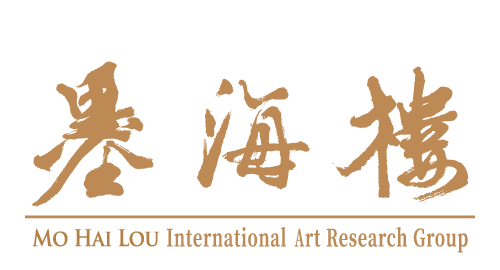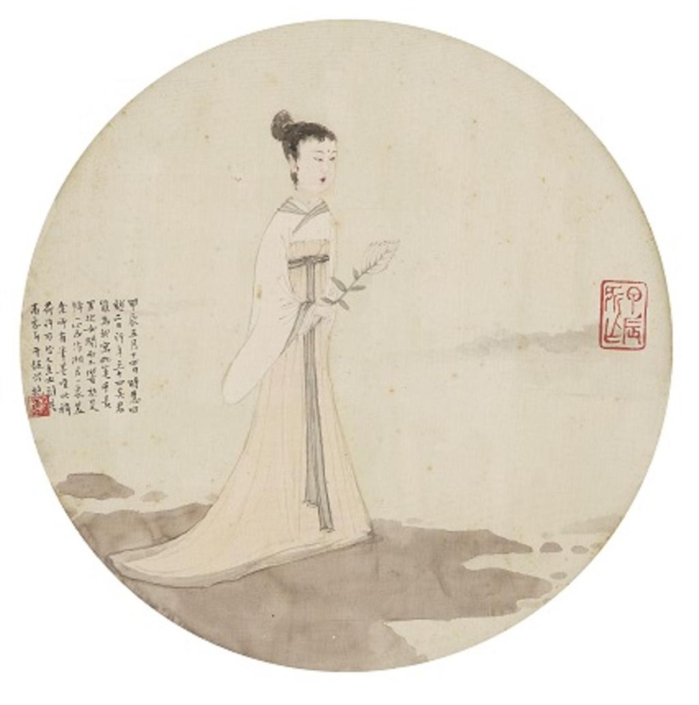“Artistic Transmission – Art Exhibition of Fu Baoshi & Fu Yiyao”, in Full Swing
▲Fu Yiyao’s work – The Nachi Fire Festival. (Photo courtesy of Mo Hai Lou)
【Reporter Chen Youjia】
Curated by Dr. Ye Guo-Shin of Mo Hai L, the Artistic Transmission – Art Exhibition of Fu Baoshi & Fu Yiyao, is now being held at Exhibition Hall 1 of the Chiang Kai-shek Memorial Hall until November 6. This marks the first-ever overseas joint exhibition of rare masterpieces by Fu Baoshi and his daughter, Fu Yiyao. A special dialogue session between Fu Yiyao and authentication expert Dr. Ye Guo-Shin will take place on November 2 at 3 PM.
A Rare Display of Artistic Legacy
Curator Dr. Ye Guo-Shin emphasized that the exhibition features numerous classic works by Fu Yiyao alongside authentic masterpieces by Fu Baoshi, highlighting the unique artistic inheritance between father and daughter and offering the public a deep cultural and artistic experience.
Fu Yiyao, a Chinese artist, followed her father’s path to Japan in the 1980s and has since resided there for over 40 years. Her works, imbued with a distinct personal style, have been collected by major museums and renowned temples across Japan, preserving and carrying forward the artistic legacy of the Fu family. Her primary artistic themes include:
- Temple murals
- Japanese folk festivals
- Poetic paintings
- Traditional landscape paintings
Many of her works feature World Heritage Sites, such as:
- The National Treasure Hall of Enryaku-ji on Mount Hiei
- Kyoto’s Sanjūsangen-dō
- Sanzen-in in Ōhara, Kyoto
- Yokohama Enman-ji
- Ryūdō-in in Nagano Prefecture
Notable representative works include:
- “Buddhism’s Eastward Journey”
- “Mount Hiei’s Enryaku-ji”
- “Guoqing Temple of Mount Tiantai”
- “The Four Seasons of Sanzen-in”
▲Fu Yiyao’s work – Enryaku-ji on Mount Hiei. (Photo courtesy of Mo Hai Lou)
Showcasing Fu Baoshi’s Masterpieces
Among Fu Baoshi’s authentic works on display, key highlights include:
- “Qu Yuan’s Nine Songs: The Mountain Spirit”, inspired by the poetry of Qu Yuan.
- “Xiang Jun,” a circular fan painting that holds special significance as the last artwork Fu Baoshi created as a birthday gift for his wife.
- Numerous exquisite landscape paintings, all rare and precious.
The Market Influence of Fu Baoshi’s Art
Since 2011, Fu Baoshi’s masterpiece “Mao Zedong’s Poetry Album” reached a record-breaking price of nearly NT$1 billion at auction, making it the leader in the “Billion-Dollar Club” of the Chinese art market. In 2017, his final landscape masterpiece, “The Majestic Scenery of Mount Mao,” fetched nearly NT$800 million at the Beijing Poly Spring Auction, ranking as his second-highest auction record after “The God of Clouds and the Great Commander” and “Mao Zedong’s Poetry Album Pages”. The opportunity to witness such an extensive collection of Fu Baoshi’s works in one exhibition is incredibly rare.
The Acclaimed “Imitating Father’s Brushwork” Series
One of the most fascinating sections of the exhibition is the “Imitating Father’s Brushwork” series, specially commissioned to recreate Fu Baoshi’s painting style through Fu Yiyao’s artistic interpretation.
Fu Yiyao, as Fu Baoshi’s beloved daughter, had the exclusive privilege of closely observing her father’s painting techniques—his brush movements, posture, and artistic expressions. It is said that Fu Baoshi never painted in front of others, not even his closest family members, except for Fu Yiyao. This rare access, combined with the exclusive use of Fu Baoshi’s original brushes, ink, and paper, enabled her to thoroughly grasp his artistic essence and faithfully recreate his brushwork, achieving an astonishing resemblance in both form and spirit.
First-Time Display of National Treasure-Level Works in Taiwan
For the first time, several national treasure-class artworks that had never left Japan are being exhibited in Taiwan. The collection spans calligraphy, paintings, ceramics, and other classic artworks, presenting a comprehensive overview of Fu Yiyao’s artistic evolution. This exhibition allows visitors to experience these rare masterpieces without traveling to Japan.
Among the must-see works:
- The “Imitating Father’s Brushwork” series, showcasing an uncanny revival of Fu Baoshi’s artistic legacy.
- The magnificent four-panel folding screen painting, “Sanjūsangen-dō”, displaying powerful and expansive composition.
- The vivid and grand “Tokushima Awa Odori Festival”, depicting Japanese folk celebrations.
- Zen-infused poetic paintings and intricately detailed ceramic paintings, where even a tiny brushstroke encapsulates an entire universe.
This exhibition offers a rare and immersive experience of Fu Yiyao’s artistic journey, meticulously curating and systematizing her creative evolution. Art lovers and collectors are warmly invited to explore and appreciate these extraordinary works in depth.
▲Fu Baoshi’s round fan artwork Xiang Jun was his last piece created for his wife’s birthday. (Image provided by Mo Hai Lou)
Media Source : Commercial Times





